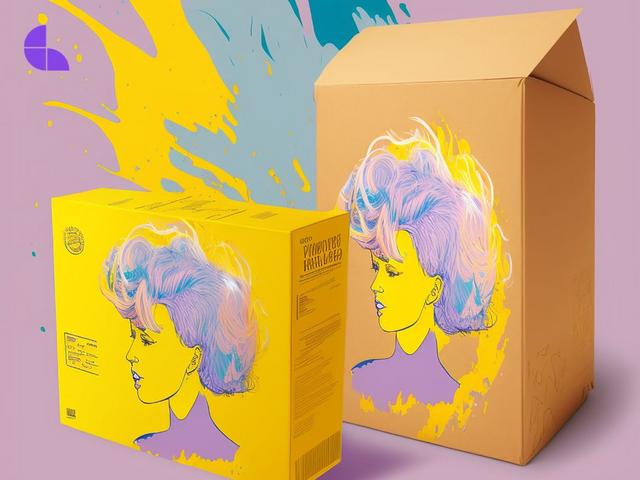Graphic design is a profession that has been around a long time and during its evolution, it has spread its wings far and wide. But don’t be mistaken, while graphic design covers broad strokes of design, it is a specific discipline with a proud identity. Graphic design is an umbrella of many specialist areas so let's take a look at how graphic design differs from graphic art specifically.
Graphic Design
In essence, graphic design is a form of visual communication that encompasses multiple fields of design. It is in everything you see in posters, websites, road signs, labels, logos, stickers, packaging, book covers, film credits or anything that conveys a message that is received visually.

The skill of a graphic designer is to communicate that message by designing a visual narrative by creating graphics for branding, advertising, and marketing initiatives among others. A good design will appeal to the viewer, both visually and emotionally. It will evoke a feeling and provoke some sort of action. In order to understand graphic design, a designer must have a knowledge of design principles, typography and colour theory. They will understand their target market and be adept in various tools including Adobe Photoshop, Illustrator, and InDesign.
The next time you follow directions to a coffee shop, walk into the branded store and buy a coffee, look around you. Everything that got you there and everything you see when you arrive, was designed by a graphic designer.
Graphic Art
While graphic design involves much creativity, graphic art is more strictly fine art and is often less interested in the commercial sphere. A graphic artist will generally create work they have personally generated with the intention of expressing a personal inner narrative or emotion. Fine artists are more concerned with disrupting and challenging perception which is not necessarily the right approach for a commercial project for example.
Many artists will experiment with any number of tools and while there is no defined set of tools a graphic artist must master, they will generally work with similar software as a graphic designer. There is however, greater freedom to explore more manual and traditional mediums. A graphic artist is free from the constraints of a client’s brief and can therefore work with any tools they wish.

Graphic art is largely found on flat surfaces such as paintings, photographs and posters and will be exhibited in galleries as opposed to commercials. It’s worth noting that graphic art can often be found in various areas of graphic design, but where it differs is the creative approach at which the work arrived in a commercial project.
…which leads to the intersection and collaboration of both fields.
A graphic designer can often use a graphic artist's work in a commercial project, and a graphic artist can use graphic design concepts to publicise their work. So, the end product of a graphic design or a graphic art poster for example, may be difficult to tell apart, but again, it is how they got there that differs.
Graphic designers are central to how firms interact with their target audience and graphic artists make substantial contributions to the cultural and creative landscape. They may differ but they can certainly be considered close allies.
Career paths and opportunities
One area where a graphic designer and a graphic artist will find themselves on different paths is in their career. Graphic designers will typically find work in advertising firms, design studios, and marketing departments. There is also a large scope for freelance work including a high demand for web design, UX/UI design, and multimedia projects. A graphic designer working for a firm can progress to art directors and creative directors.

A graphic artist on the other hand will generally aim for more artistic and creative fields. While there is much work for video game design and animation, they are more of an independent artist with a less regimented workflow. There are however plenty of opportunities for a graphic artist to collaborate with designers and other artists and they can often work on commission or on corporate projects. A graphic artist's success is much like any other artist's success where it depends on recognition as much as talent and perseverance.
Educational requirements and skill development
Graphic design comes from a skillset that requires formal education. Some business people have been known to personally tackle the design of their own branding, which may at first seem to work, but they soon come face to face with their limitations as a so-called designer. There are many skills that go beyond creating attractive artwork including longevity, adaptability and an in-depth knowledge of the power of colour, typography and various other elements and principles of design. After all, how can you break the rules if you don’t know them to begin with?
For graphic artists, formal education is naturally advantageous but many are self-taught or have chosen non-traditional educational pathways. Experimentation, personal artistic development, and a curiosity for the arts in general are quite typical traits of a graphic artist.
Future outlook
The digital revolution has altered the terrain of all art & design and many skills and techniques employed by both are increasingly overlapping. The future holds intriguing advances such as augmented reality, virtual reality, and interactive design, which will require the skills of both designers and artists.
While graphic designers and graphic artists play different roles, understanding their distinct differences helps us to appreciate the depth and breadth of the creative industry. As a Graphic Design Academy, our aim is to nurture all and any creative talent and to recognise the potential to shape the visual world around us. Who knows, maybe you thought you were a graphic artist but you are actually in fact a graphic designer?!


